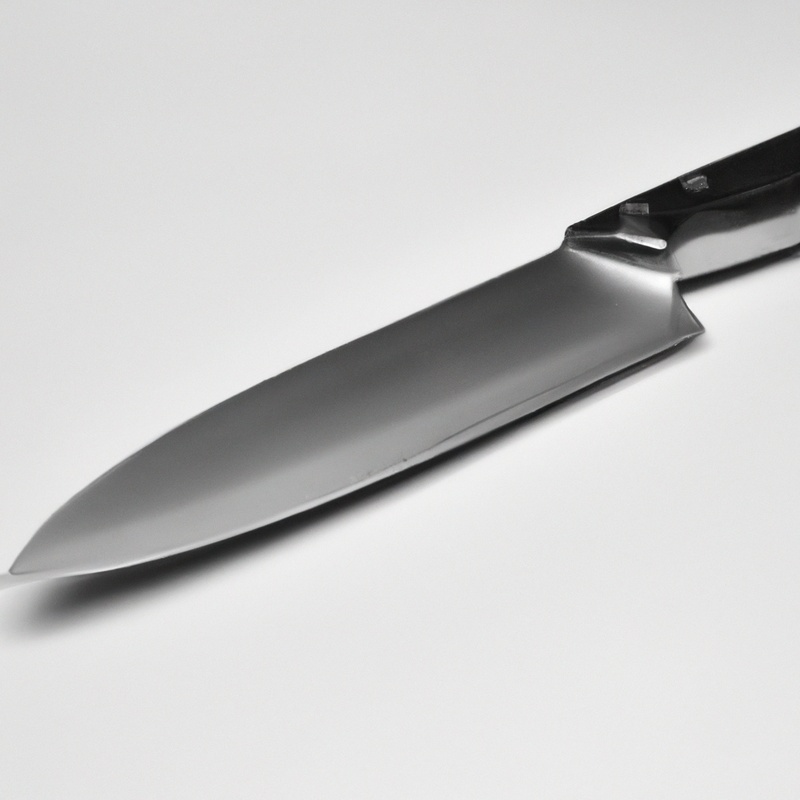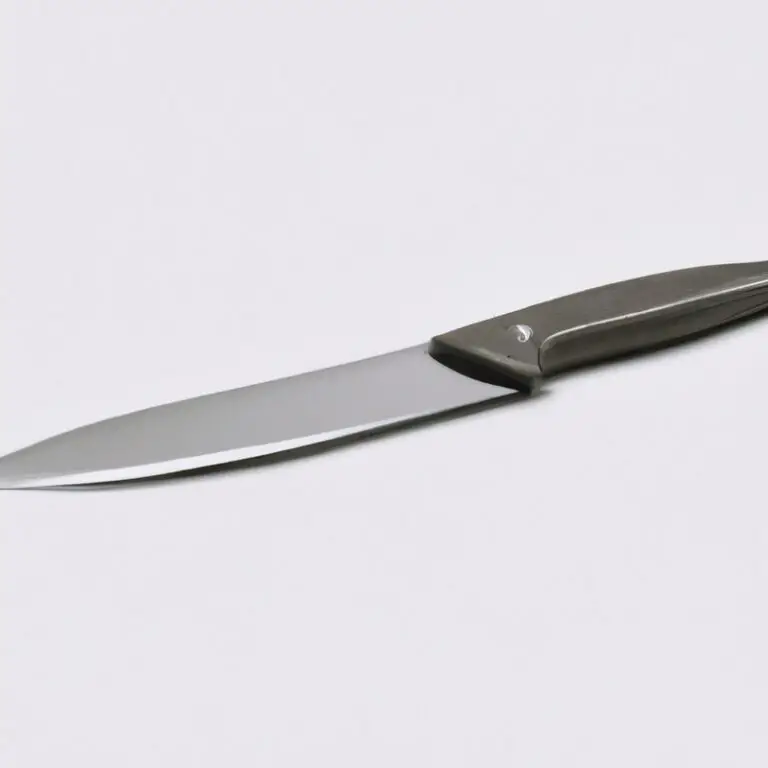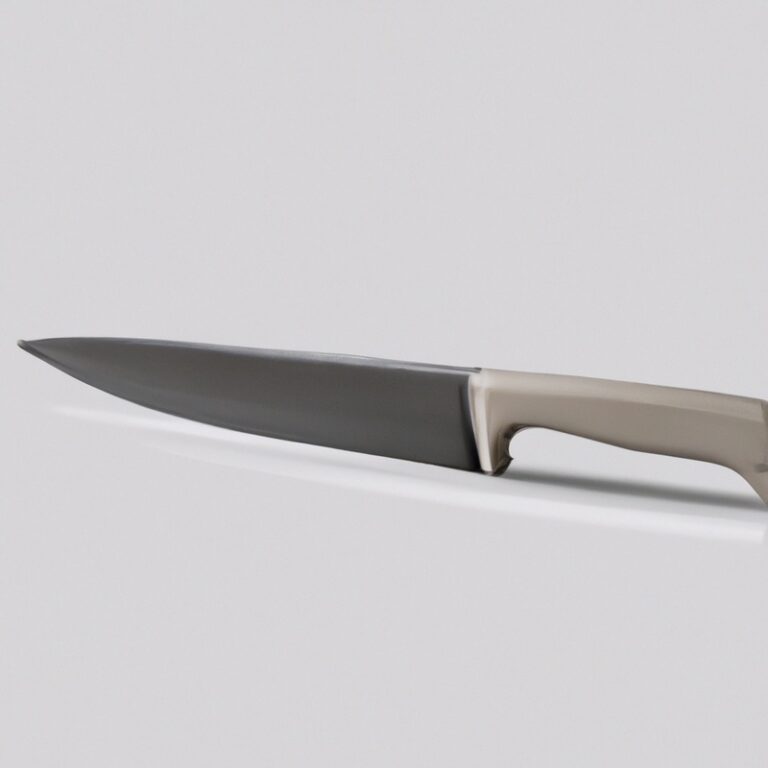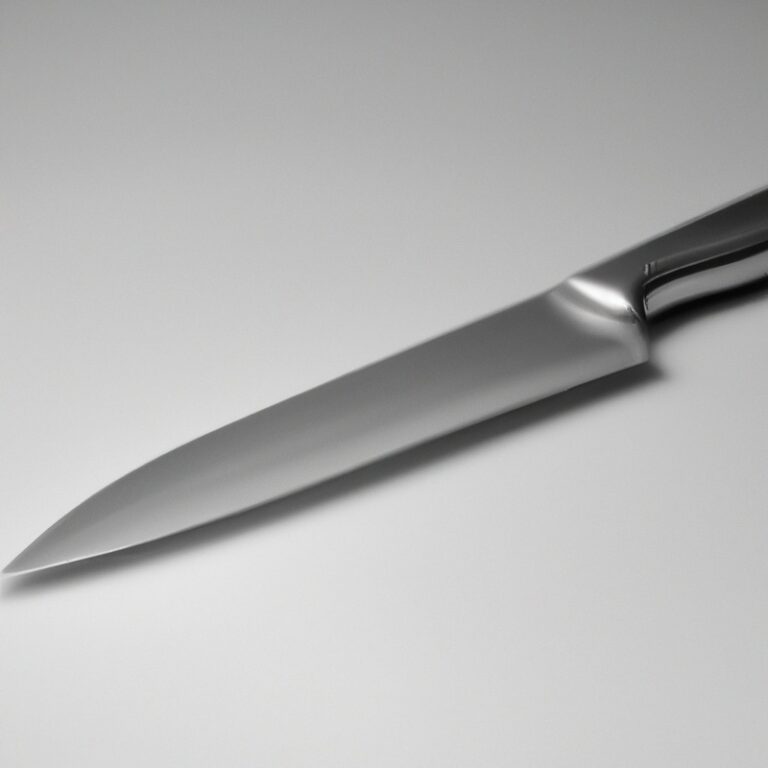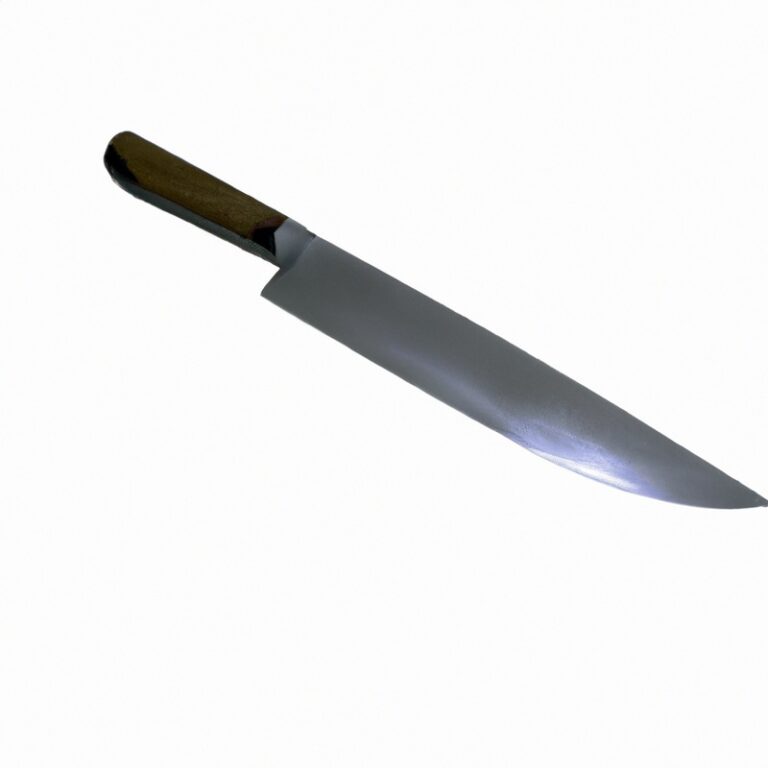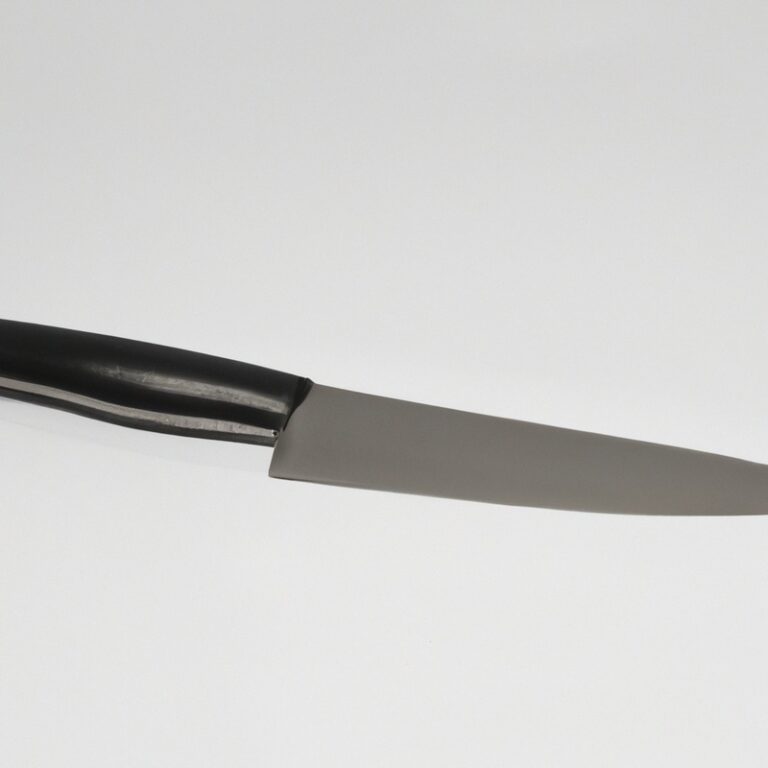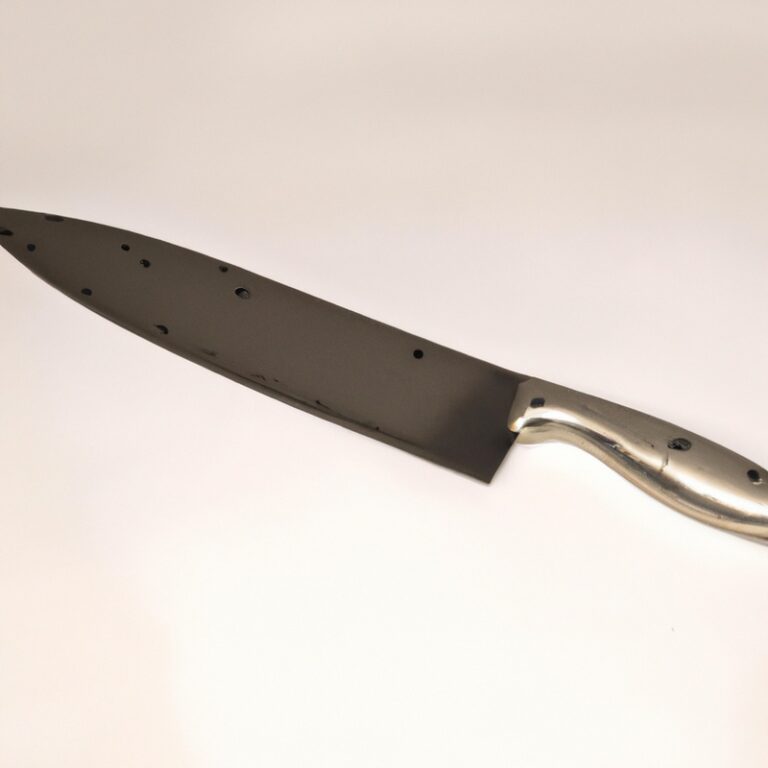How Does Knife Steel Affect Blade Flexibility?
Key Takeaways:
- Different types of knife steel can significantly impact blade flexibility.
- Blade flexibility is influenced by factors such as carbon content and heat treatment of the steel.
- High-carbon steel tends to have less flexibility compared to stainless steel.
- Blade flexibility can affect the knife’s performance and user experience.
Have you ever wondered why some knives are more flexible than others?
It all comes down to the steel used to craft the blade.
As an expert in knife steel and its impact on blade performance, I’m here to shed some light on this topic.
In this article, I will delve into the importance of knife steel in blade flexibility, explore the different types of knife steel and their effects, and help you understand how to choose the right steel for your desired level of flexibility.
So, if you’ve ever wondered why some knives bend effortlessly while others remain rigid, keep reading to uncover the secrets behind blade flexibility and steel selection.
| Knife Steel | Affects Blade Flexibility |
|---|---|
| High Carbon Steel | Increases rigidity and reduces flexibility. |
| Stainless Steel | Can vary depending on stainless steel type, but generally less flexible than high carbon steel. |
| Tool Steel | Offers a balance of rigidity and flexibility, making it suitable for many applications. |
| Damascus Steel | Can vary based on the specific blend of steels used in the Damascus pattern. Some blends offer good flexibility. |
| Powdered Steel | Can be tailored to have specific levels of flexibility depending on the blend of powdered metals used. |
The Importance of Knife Steel in Blade Flexibility
What is Blade Flexibility?
Blade flexibility refers to the ability of a knife blade to bend without breaking.
It is an important characteristic that determines how well a knife can handle various cutting tasks.
A flexible blade allows for precise and delicate cuts, such as filleting fish or trimming fat from meat.
On the other hand, a stiffer blade provides more power and control for tasks that require heavier cutting or chopping.
Blade flexibility is influenced by factors such as the type of knife steel used, the blade geometry and thickness, and the heat treatment applied to the blade.
What is Knife Steel and Its Role in Blade Flexibility?
Knife steel refers to the type of steel used in the construction of a knife blade.
It plays a crucial role in determining the blade’s flexibility.
Different types of knife steel have varying levels of hardness, which affects how much the blade can bend without breaking.
The composition and heat treatment of the steel also influence its flexibility.
High carbon steel, for example, tends to be more flexible than stainless steel.
Choosing the right knife steel for desired blade flexibility is important for various applications, such as culinary use, outdoor knives, and everyday carry.
Different Types of Knife Steel and Their Effects on Blade Flexibility
Different types of knife steel have varying effects on blade flexibility. High carbon steel, known for its excellent edge retention, tends to be less flexible.
Stainless steel, on the other hand, offers good corrosion resistance but sacrifices some flexibility.
Damascus steel, famous for its beautiful patterns, can provide a balance between flexibility and durability. Blade materials like VG-10 and S30V offer a compromise, providing good flexibility while maintaining edge retention.
It’s important to choose the right steel according to your specific needs and preferences.
Factors Affecting Blade Flexibility
Composition and Hardness of Knife Steel
Composition and hardness are two key factors that determine the flexibility of knife steel. The composition refers to the elements present in the steel, such as carbon, chromium, and vanadium, which affect its strength and flexibility.
Hardness, measured on the Rockwell scale, determines how well the steel can hold an edge and resist deformation.
A higher hardness generally means less flexibility, while a lower hardness offers more flexibility. Finding the right balance between composition and hardness is crucial to achieve the desired blade flexibility for different knife applications.
Blade Geometry and Thickness
Blade geometry and thickness play a significant role in the flexibility of a knife blade.
The shape of the blade, such as a straight edge, a curved edge, or a tanto-style edge, affects how the blade flexes during use.
Thin blades tend to be more flexible, while thick blades are stiffer and more resistant to bending.
The taper or thickness of the blade along its length can also impact flexibility.
Blades that thin out towards the edge are generally more flexible than blades with a uniform thickness.
These factors are important to consider when selecting a knife for specific tasks or preferences.
Heat Treatment and Tempering
Heat treatment and tempering are critical processes in determining the flexibility of a knife blade.
Heat treatment involves heating the steel to a specific temperature and then rapidly cooling it to achieve the desired hardness.
Tempering follows, where the blade is reheated to a lower temperature and then slowly cooled to reduce brittleness and increase flexibility.
These processes ensure that the knife steel is properly hardened while maintaining its ability to bend without breaking.
By controlling the heat treatment and tempering processes, manufacturers can tailor the blade’s flexibility to meet specific needs and preferences.
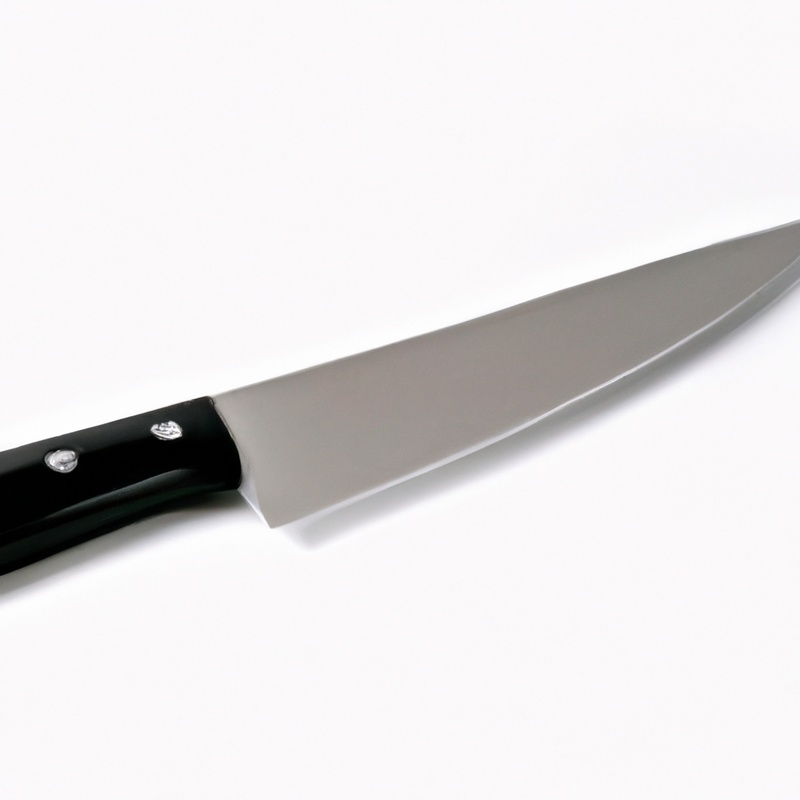
Understanding the Relationship Between Knife Steel and Blade Flexibility
High Carbon Steel and its Impact on Blade Flexibility
High carbon steel has a significant impact on blade flexibility.
Due to its high carbon content, this type of steel provides excellent hardness and strength, resulting in a more rigid blade.
However, it is important to note that high carbon steel can be less flexible compared to other steel types.
The increased rigidity of high carbon steel allows for better edge retention and durability, but it may sacrifice some flexibility.
This characteristic makes high carbon steel a popular choice for knives that require precise, controlled cuts, such as chef’s knives and hunting knives.
Stainless Steel and its Influence on Blade Flexibility
Stainless steel is a commonly used material in knife blades due to its influence on blade flexibility. Its unique composition, which includes a high percentage of chromium, provides excellent corrosion resistance and strength.
This allows for a more flexible blade, enabling precise cutting and better control.
Additionally, stainless steel’s resistance to staining and rusting contributes to the overall durability and longevity of the blade. When choosing a knife, considering the influence of stainless steel on blade flexibility can help ensure a reliable and versatile cutting tool.
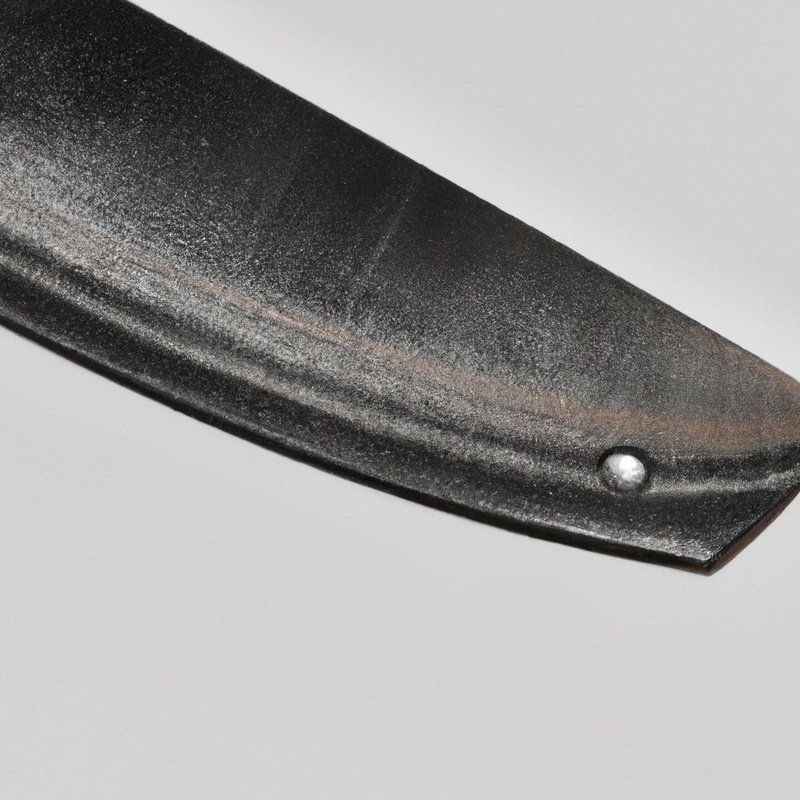
Damascus Steel and Its Unique Flexibility Characteristics
Damascus steel is renowned for its unique flexibility characteristics. This type of steel is created through a process called pattern welding, where different layers of steel are forged together.
The result is a blade with distinctive wavy patterns and exceptional flexibility.
The layered construction of Damascus steel allows for better distribution of stresses during use, making it less prone to breaking or chipping. This flexibility also enables the blade to absorb and redistribute shock, reducing the risk of fractures.
Furthermore, Damascus steel exhibits a combination of hardness and toughness, allowing it to retain its sharpness while being flexible.
This makes it an excellent choice for tasks that require both cutting ability and durability. Overall, the unique flexibility characteristics of Damascus steel make it a sought-after option for those who value the performance and resilience of their blades.
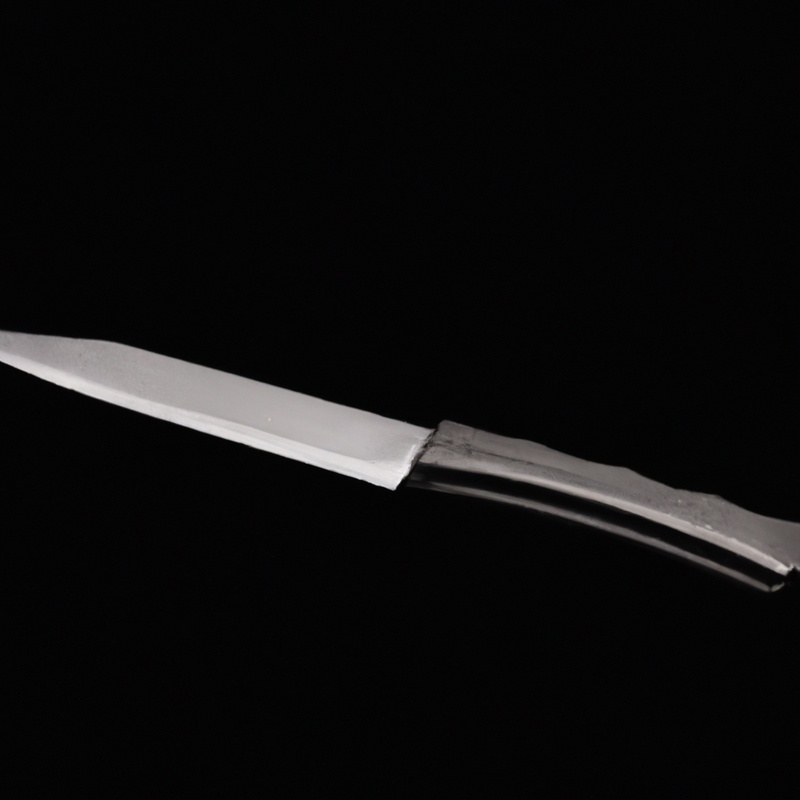
Choosing the Right Knife Steel for Desired Blade Flexibility
Considerations for Specific Culinary Uses
Considerations for Specific Culinary Uses: When selecting a knife steel for culinary purposes, it’s important to match the blade flexibility to the specific tasks you’ll be performing in the kitchen.
For delicate tasks like filleting fish or slicing sushi, a flexible blade made from high carbon steel is often preferred.
This allows for precise control and maneuverability.
On the other hand, for heavy-duty tasks like chopping through bones or hard vegetables, a stiffer blade made from stainless steel or a combination of stainless and carbon steel is recommended.
This provides the necessary strength and durability.
Considering the types of ingredients you typically work with and the techniques you use in the kitchen will help you choose the right knife steel for your specific culinary needs.
Whether you’re a professional chef or a passionate home cook, finding the perfect balance of blade flexibility and strength is key to achieving exceptional results in the kitchen.
Applications in Outdoor and Survival Knives
Outdoor and survival knives are essential tools in various outdoor activities such as camping, hiking, and hunting. These knives are designed to withstand harsh conditions and perform tasks like carving, cutting, and self-defense.
The right choice of knife steel is crucial for their effectiveness.
High carbon steel is preferred for its durability and ability to hold a sharp edge, making it suitable for heavy-duty tasks. Stainless steel is another popular option as it offers corrosion resistance and requires minimal maintenance.
Damascus steel is also used in outdoor and survival knives for its unique flexibility and aesthetic appeal.
Balancing Flexibility and Durability in Everyday Carry Knives
When choosing an everyday carry knife, it’s important to find the right balance between flexibility and durability. A knife that is too flexible may not perform well in demanding tasks, while a knife that is too rigid may be prone to breaking.
To achieve this balance, consider the following factors:
- Blade Steel: Opt for a steel that offers a good balance between hardness and toughness. High carbon steels, such as D2 or S30V, are known for their durability, while stainless steels like VG-10 or 154CM provide a good combination of flexibility and corrosion resistance.
- Blade Thickness: Thicker blades tend to be more rigid, whereas thinner blades offer greater flexibility. Choosing a blade thickness that suits your intended use will help strike the right balance.
- Blade Geometry: The shape and design of the blade can affect its flexibility. Tapered or drop point blades, for example, tend to be more flexible than tanto or spear point blades.
By considering these factors, you can find an everyday carry knife that offers the ideal balance between flexibility and durability, ensuring it performs well in various tasks while remaining sturdy enough for everyday use.
Maintaining Blade Flexibility and Steel Integrity
Proper Knife Handling and Care
Proper knife handling and care is essential for maintaining blade flexibility and steel integrity.
Here are some tips to keep in mind:
- Handle with care: Always use a cutting board and avoid cutting on hard surfaces like ceramic or glass. This prevents unnecessary stress on the blade.
- Clean and dry after each use: Wash the knife by hand using mild soap and warm water. Dry it thoroughly to prevent moisture buildup, which can lead to rust.
- Store safely: Store knives in a knife block, sheath, or magnetic strip to protect the blade and prevent accidents. Avoid storing them loose in drawers where they can rub against other utensils.
- Regular sharpening: Keep the blade sharp by using a honing rod or whetstone regularly. This helps to maintain the blade’s sharpness and overall performance.
- Avoid improper use: Don’t use your knife as a screwdriver, can opener, or for any other tasks it’s not intended for. This can cause damage to the blade and affect its flexibility.
Sharpening Techniques for Blade Flexibility
When it comes to sharpening techniques for blade flexibility, there are a few things to keep in mind.
First, use a sharpening stone or whetstone to maintain the edge of the blade.
Start with a coarse grit and gradually move to finer grits for a polished edge.
Second, maintain a consistent angle while sharpening to ensure an even edge.
A sharpening guide can help with this.
Third, use light pressure and smooth, controlled strokes to avoid overheating the blade or removing too much material.
Regularly honing the blade with a honing rod can also help maintain flexibility between sharpenings.
Remember to clean and dry the blade after sharpening to prevent rusting.
Happy sharpening!
Balancing Flexibility with Blade Edge Retention
To balance flexibility with blade edge retention, it’s important to choose the right knife steel and maintain it properly. Some steels, like high carbon steel, offer excellent edge retention but may be less flexible.
On the other hand, stainless steel provides good flexibility but may not hold an edge as long.
To strike a balance, consider steels with a medium carbon content and appropriate hardness. Regular sharpening and proper handling will also help maintain the blade’s flexibility while maximizing its edge retention.
It’s all about finding the right combination for your specific needs.
The Future of Knife Steel and Blade Flexibility
Advancements in Metallurgy and Manufacturing Techniques
Advancements in metallurgy and manufacturing techniques have revolutionized the production of knife steel, enhancing blade flexibility. Through innovative processes and technologies, manufacturers are able to develop steels with improved mechanical properties, such as higher tensile strength and increased resistance to corrosion.
Techniques like powder metallurgy and heat treatment allow for precise control over the composition and structure of the steel, resulting in blades that are both flexible and durable.
These advancements have opened up possibilities for creating knives that can withstand rigorous use while maintaining optimal blade flexibility.
Innovative Steel Alloys and Performance Enhancements
Innovative steel alloys and performance enhancements play a significant role in improving blade flexibility.
Manufacturers are constantly pushing the boundaries of steel technology to create alloys with enhanced strength, durability, and flexibility.
These advancements allow for more precise control and better maneuverability while cutting.
Features like improved edge retention, increased hardness, and resistance to corrosion are also being developed to enhance performance.
By incorporating these innovative steel alloys and performance enhancements, knife makers can create blades that excel in various cutting tasks, delivering a superior experience for users.
The continuous development and refinement of steel alloys contribute to the evolution of blade flexibility and overall knife performance.
The Impact of Technology on Blade Flexibility and Steel Selection
Technology has had a significant impact on blade flexibility and steel selection in recent years.
With advancements in metallurgy and manufacturing techniques, we now have access to innovative steel alloys that offer improved flexibility without sacrificing durability.
Additionally, new manufacturing processes allow for the creation of blades with precise geometries and optimized thicknesses, further enhancing their flexibility.
These technological advancements have opened up a world of possibilities for knife enthusiasts, allowing them to choose blades that perfectly suit their desired level of flexibility and performance.
Final Verdict
The choice of knife steel has a significant impact on blade flexibility.
Different types of steel, such as high carbon steel, stainless steel, and Damascus steel, have varying effects on flexibility.
Factors like steel composition, hardness, blade geometry, and heat treatment play a crucial role in determining the flexibility of the blade.
By understanding the relationship between knife steel and flexibility, one can make informed decisions when choosing the right steel for specific culinary, outdoor, or everyday carry applications.
Proper knife handling, maintenance, and sharpening techniques are also vital in maintaining blade flexibility and steel integrity.
As technology and metallurgy continue to advance, we can expect further innovations and enhancements in knife steel, leading to even more refined and versatile blade flexibility.

